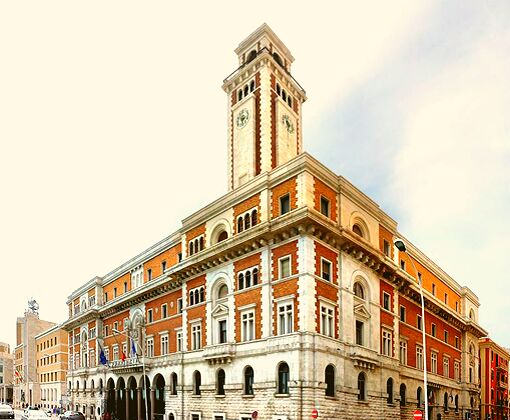
The Basilica of San Nicola in Bari
The basilica is an important meeting place for Christians of different beliefs and the circumstance has consolidated religious tourism over the years, contributing to further enriching the already marked international dimension of the city. It is no coincidence that Mass is celebrated according to the rite of Constantinople both in the Russian-Orthodox chapel of the crypt of the basilica and on the altar of the tomb of the saint. From the architectural point of view, instead, the Papal Basilica of San Nicola is an example of Romanesque style. Built under Norman domination at the turn of the eleventh and twelfth centuries (following the arrival of the remains of St. Nicholas from the city of Myra, year 1087), the building was built on the area of residence of the Catepan, the Greek governor- Byzantine who resided permanently in the city.
Go to the websiteOld Bari
The picturesque old town of the city has been reborn in recent years, after a long history of neglect and crime. Today those who walk in these suggestive alleys find them very well kept and boiling with activities of all kinds. With a little luck, you find yourself rubbing shoulders with the ladies who prepare orecchiette or taralli for the market. Venture out for a walk and breathe the air of the most authentic Bari.


Promenade of Bari
The one in Bari is the longest promenade in Europe. Inaugurated in 1927, during fascism, this kilometric walk mixes along its path elements of a remote past with modern buildings. Your stay in the city will not be complete without having traveled at sunset.
Norman-Swabian Castle
“The obscure symbol of a perched and detached power from everyday life, it was never the castle of the people of Bari, who from it – rather than defended it – felt threatened” (Stefania Mola). Already, apparently since antiquity this fortification has never attracted the sympathies of the inhabitants of the city. However, this does not make it any less beautiful or historically interesting. Originally built in 1131, razed to the ground and then rebuilt in 1240 at the behest of Frederick II of Swabia, “Stupor Mundi”, for the people of Bari today it is simply “‘ u castìdde »


Corrado Giaquinto Art Gallery
This exhibition within the Province building can be a very interesting starting point if you are interested in regional culture. In fact, it contains paintings, clothes and objects from these lands with more than a thousand years of history behind them: The proximity to the waterfront will also allow you to match the visit with one of the most interesting walks Bari offers.
Go to the websiteUnderground Bari
This underground path, which unfolds from the Norman Swabian castle, will take you back two millennia of the city’s history, from its first foundation in the Bronze Age to the present day, passing through the Greek-Roman and Byzantine ages . An exceptional way to see the layering of Bari over the centuries.


Petruzzelli theater
This theater, entirely rebuilt in 1991 after a terrible fire, is the beating heart of Bari’s cultural offer. In fact, from its foundation in 1903 to the present, it has always been here that the most important events in the city went on stage. Particularly suitable for lovers of lyric and classical music.
Go to the websitePane & Pomodoro beach
A beach very close to the city center, well connected by public transport and with the facilities necessary to enjoy a day at the beach with all comforts. The long beach with fine sand, shallow for many meters from the shore, is also suitable for children. The numerous kiosks present will allow you to eat and drink something at moderate prices.


Torre Quetta beach
A small beach near the center excellent for a relaxing day under an umbrella or just for a walk. Along the coast, there are numerous bars and restaurants where you can eat something or have an aperitif looking at the sea. Behind it, there is also a small pine forest where you can take refuge in the shade on too hot days.
Piccinni theater
«Piccinni is the theater of a city full of theaters, it is the theater of capital and of a present and alive South. Piccinni must be a scene open to the influences of the world and a hospitable audience of participating spectators. Piccinni must excite, challenging typologies, ages, and indifference: to represent and feed that feeling of community that makes a theater and a city. » (Nicola Laforgia)
The municipal theater Niccolò Piccinni is the oldest theater in the city of Bari. Due to the fire that destroyed the Petruzzelli theater in 1991, it was the most important hall in the capital for almost twenty years, both in terms of capacity and tradition. Piccinni is also, by size, the fourth Italian-style theater in the region, after Petruzzelli himself, the Politeama Greco of Lecce and Verdi of San Severo.
Go to the website

Margherita theater
A unique turn of the century theater built on stilts directly on the sea. The liberty style building is from 1914, designed by Francesco De Giglio. Being entirely surrounded by water, the theater was originally connected to the mainland by a pier. After two years of work, the theater was reopened to the public in December 2018, and today it hosts a large number of cultural events of international scope. Check the calendar of performances on the days when you are in Bari, you will see that you will not regret it.
Go to the website